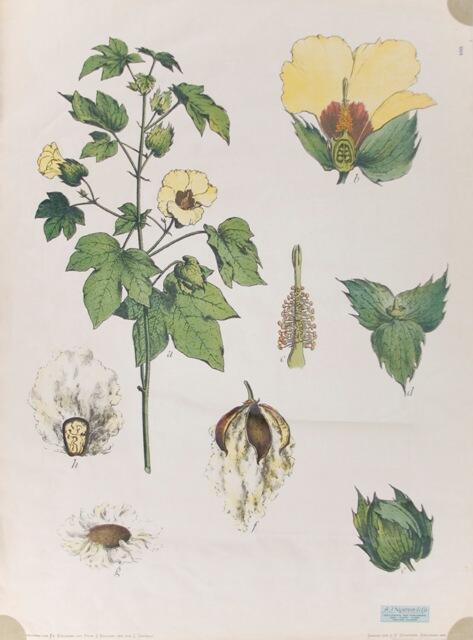

Educational wallcharts were designed for classroom use in the early 1800's. They were first made in small format and depicted simple scenes and objects for primary school teaching. Around 1870 wallcharts were produced and sold in large quantities not only for primary schools but also for higher education. Several factors contributed to the use of wallcharts. Lithography was invented in the late 1700's and made possible the production of large color prints at a reasonable price. In the nineteenth century in Germany the educational system underwent major reform. In 1852 the average schoolteacher had 136 students in their classroom. It was difficult to pass engravings around a classroom and almost impossible to show students the view through a microscope. Large wall images could be viewed from almost every corner of the classroom and became popular with instructors. Botanische Wandtafeln, or, Botanical Wallcharts, show anatomical and morphological details of plants. The Botany Libraries and Archives own several incomplete sets of Botanische Wandtafeln, among them charts by Leopold Kny, Alios Pokorny, Engleder, Hartinger and Schlitzberger.
Please contact the Archivist if you would like to make an appointment to view the wallcharts, or have any questions or comments.
Please note some of the wall charts are extremely fragile and may be restricted.

References
Bucchi, Massimiano. (1998) Images of Science in the Classroom: Wallcharts and Science Education 1850-1920. The British Journal for the History of Science, Vol. 31, No. 2, pp. 161-184.
Schmid, Rudolph. (1990) Wall Charts (Wandtafeln) - Remembrance of Things Past. Taxon, Vol. 39, pp. 471-472.